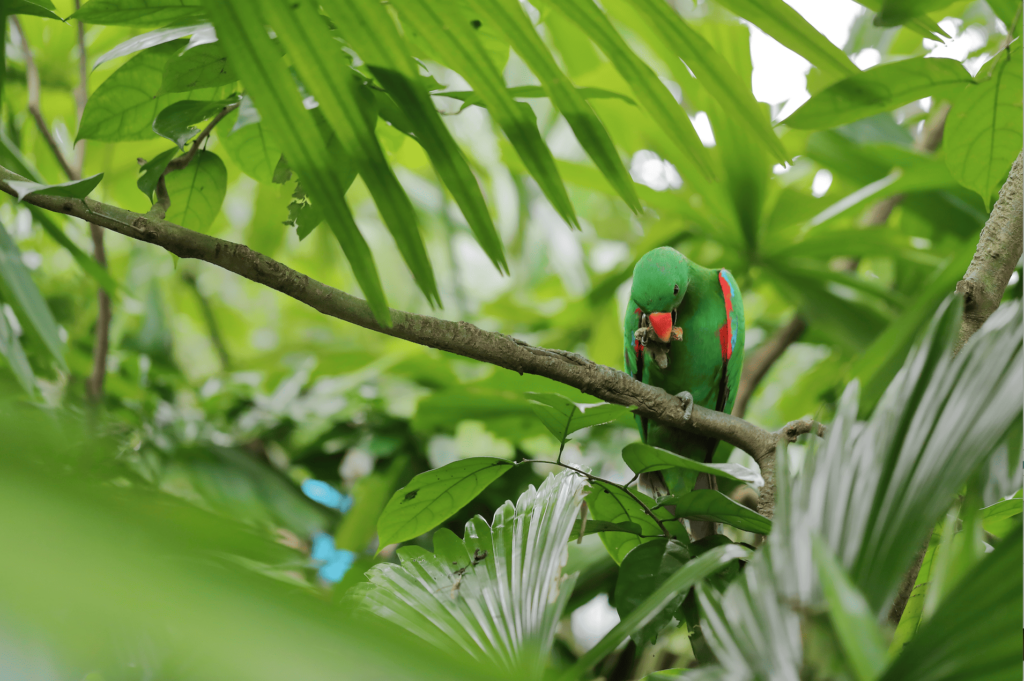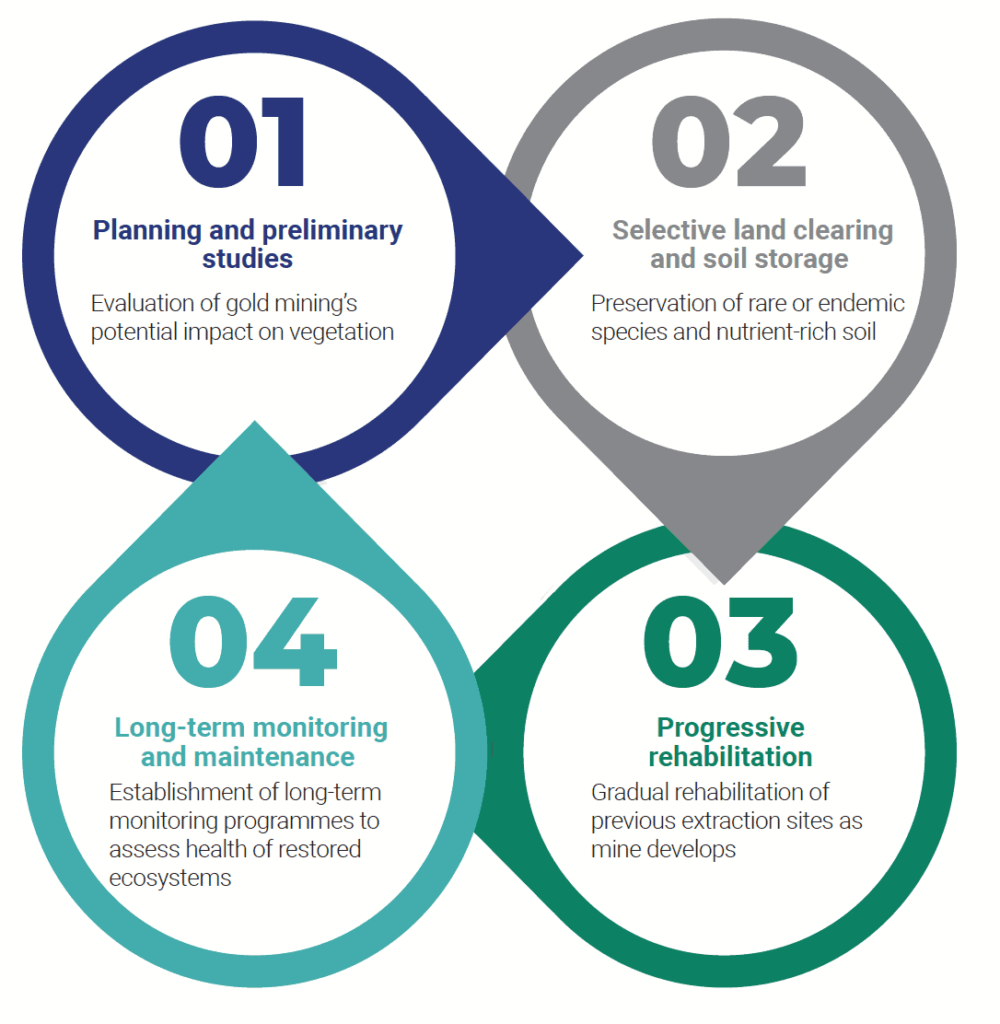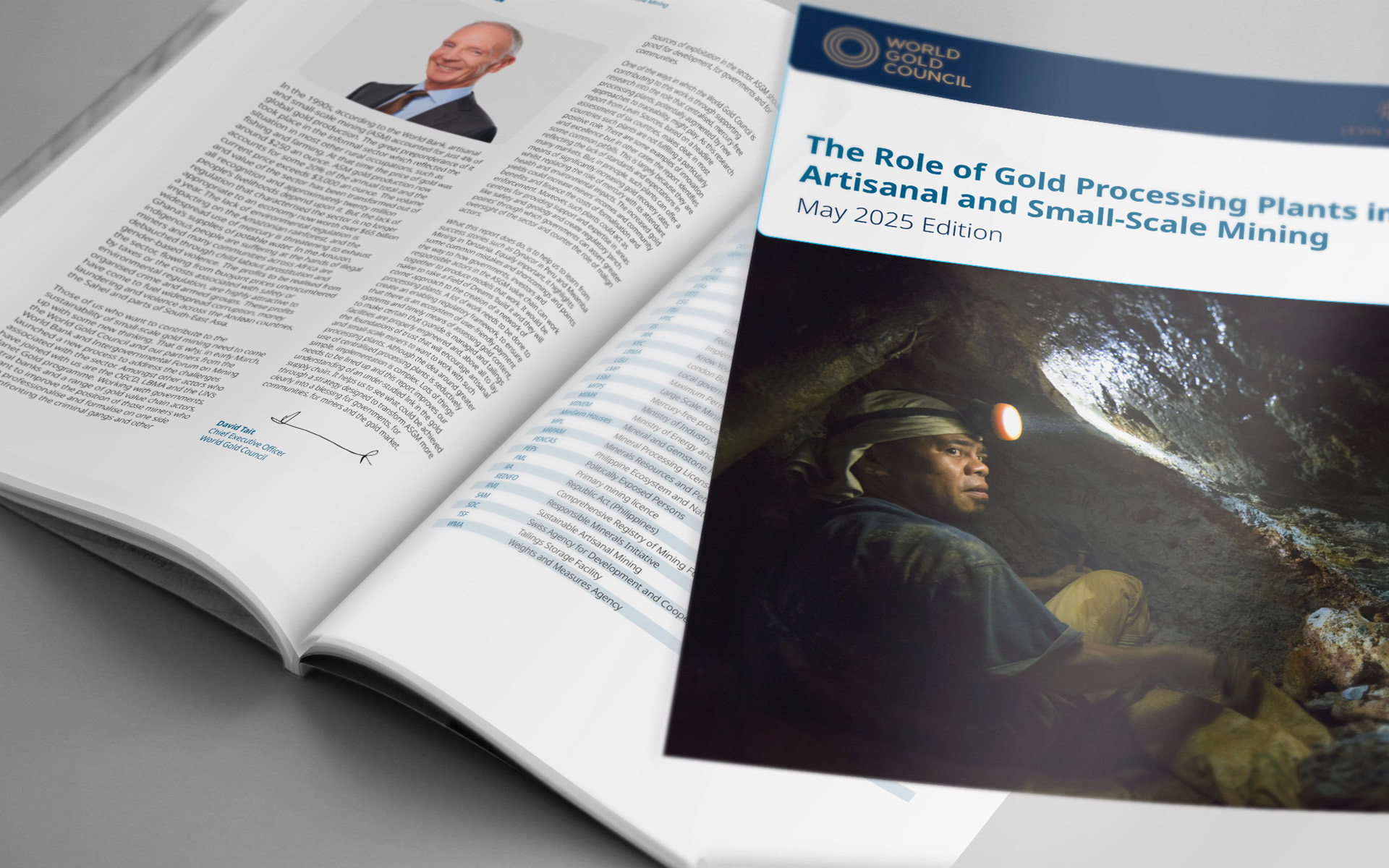Gold mining takes on the challenge of reforestation
Generally located in natural areas, the mining industry is on the front lines when it comes to preserving biodiversity, combatting erosion and mitigating global warming. This is an issue that concerns the entire gold value chain and calls for the implementation of ambitious, long-term reforestation programmes.
Gold mining is a singular industry in many ways. Unlike processing activities, which can easily be relocated, mining can only take place in very specific natural areas, often forested, which it occupies for varying lengths of time. Because gold is mixed with other rocks and often buried underground, extracting it also requires aggressive, intrusive processes, including, at times, the installation of major infrastructure onsite. As a result, the mining industry automatically affects ecosystems.
For mining industry players, addressing this challenge goes beyond sustainable mining (elimination of mercury, involvement of local communities, etc.) and aims for complete environmental restoration of the sites concerned well after the production period. Why set the bar so high? There are several reasons for this imperative.

Preservation of biodiversity: forests are home to a large number of plant and animal species. However, mining can degrade these natural habitats, with an adverse impact on biodiversity. By restoring ecosystems, reforestation encourages the return of indigenous species.
Social responsibility and local acceptance: mining activities can be perceived as harmful to the environment and to the quality of life for local populations. The implementation of reforestation programmes, however, goes beyond mere window-dressing to demonstrate the company’s commitment to environmental restoration, conservation and community well-being. These practices can help to enhance social acceptance of mining activities and establish healthy, peaceful relations with local stakeholders.
Mitigating climate change: forests play a major role in regulating the climate by absorbing carbon dioxide (CO2) from the atmosphere via photosynthesis. While deforestation linked to gold mining leads to the release of CO2, reforestation enables this same gas to be recaptured, thereby helping to mitigate climate change.
Soil protection and prevention of erosion: while forests help to preserve soil strata, mining increases vulnerability to erosion, leading to land degradation and pollution of watercourses. Here again, reforestation triggers the opposite dynamic.
Regulatory compliance: many countries have implemented strict environmental protection regulations requiring that mining companies restore degraded areas after the period of operation. Managing reforestation makes it possible mining companies to comply with these legal imperatives.
While reforestation to offset the negative externalities of the mining industry is no longer merely optional, appropriate programmes still need to be developed and implemented. This is a huge challenge, given that the reforestation of gold mining sites is a complex process that requires major efforts over a long period of time. Above all, the issue depends in practice on a large number of factors and calls for a bespoke response that takes into account the history of the mine (and in some cases, the cumulative extent of past damage), the type of operation (open pit, underground or alluvial) and the immediate environment of the site (presence or absence of initial forest, richness of biodiversity, etc.).
There is no ready-made solution, but the best practices in the sector are all based on the same overall sequence:

Planning and preliminary studies: prior to any mining operations, mining companies must carry out in-depth environmental studies to assess the potential impact of gold mining on vegetation and draw up appropriate reforestation plans.
Selective land clearing and soil storage: before starting gold extraction, mining companies may carry out selective land clearing to preserve valuable or endemic plant species. Nutrient-rich soils can then be removed and stored for re-use during subsequent reforestation.
Progressive rehabilitation: mining companies can then progressively rehabilitate previously mined areas as mining progresses. This strategy may involve reclaiming the site using previously stored soil, reintroducing native vegetation, restoring watercourses or creating habitats favourable to biodiversity.
Long-term monitoring and maintenance: once a mine is closed, mining companies must set up a long-term monitoring programme to assess the growth of trees and the health of restored ecosystems. Regular maintenance of plantations, including irrigation, weed control and pest control, may also be carried out.
During each of these phases, mining companies have every interest in collaborating with local communities, environmental experts and non-governmental organisations. This is a great way to maximise the impact of these initiatives as well as benefit from existing local knowledge of environmental restoration.

Kering: an example of reforestation following gold mining in French Guiana
The issue of reforestation concerns the entire gold value chain. Highly reliant on gold in its manufacturing processes, notably for jewellery, Kering bears as much responsibility for the environmental consequences of gold extraction activities as any mining company active on the ground. Recognising this, the French luxury goods group has set up a programme to revegetate 100% of the alluvial gold mine sites following their exploitation in French Guyana (although a rehabilitation of 30% is sufficient under French law).
Kering first joined forces with two partners, Solicaz and Forest Finance, who created onsite forestry nurseries and prepared more than 150,000 seedlings to be distributed over more than 116 hectares (for an average density of 1,400 seedlings/hectare). A wide variety of forest species were selected following an ecological assessment, starting with certain nitrogen-fixing species designed to restore soil quality and reactivate a natural forest cycle.
This programme, which is now beginning to bear fruit, is assiduously monitored by Kering’s partners, who regularly analyse the health of the soil (especially its biological and nutritional activity), the quality of tree growth and the appearance of spontaneous plant diversity. By aiming for total restoration of the ecosystem, this project will not only restore favourable conditions for the return of biodiversity (fauna: habitats for animals, insects, flora: shade and nutritional contribution), but will also reestablish a valuable carbon sink destroyed by mining activities.






